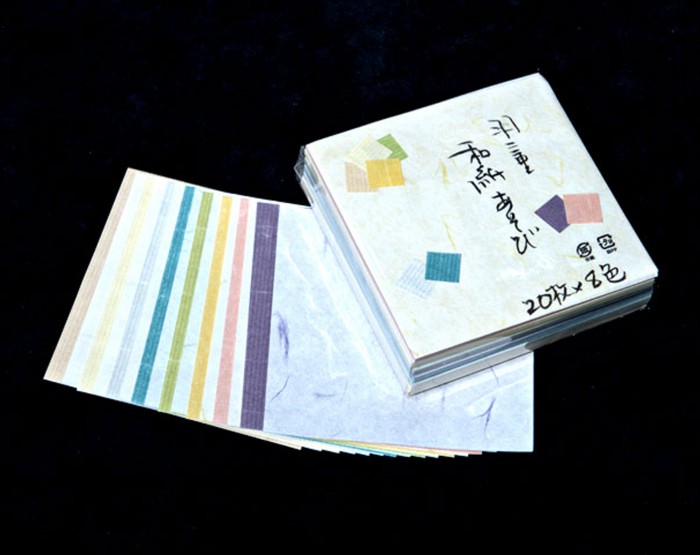Washi Asobi Multi-colour Origami Papers
This convenient pack contains 160 pieces of multi-coloured washi paper, suitable for origami making and as elegant note paper. The paper is soft and smooth with beautiful fibrous character, a characteristic of Echizen washi paper. Pocket-sized but boasting a variety of colours, be it in solid hues or pastel shades, the “washi asobi” papers will certainly make paper crafts a delightful activity.
Composed of 2 kanji characters, Washi literally means Japanese (wa) paper (shi). It is believed that the Japanese art of paper making was brought in from China in 610AD by Buddhist monks who produced it for writing sutras. In merely 200 years, the level of craftsmanship had advanced so far that the variety in colour, texture and design had grown to an unbelievable range. By the late 1800’s it was recorded that there were no less than 100,000 families involved in the papermaking industry, by hand. However, this traditional art has since dwindled to only about a handful of 400 or so families as mechanised papermaking technology from the West became more sought after.
The plants which are used to make traditional washi paper are kouzo (paper mulberry), mitsumata and gampi. The strengths of each of these shrubs are combined to provide an organic paper which is both thick and strong in texture, yet soft and delicate to the touch. With the bark removed, the branches of these plants are trimmed and soaked. The inner bark is then painstakingly separated, cleaned, pounded and stretched. Fermented tororo-aoi (fermented hibiscus root) is further added to produce a paste-like substance when combined. This paste is then evenly spread out on a bamboo mesh screen, each layer forming a sheet of paper which is piled up wet and laid to dry on wood.
- Paper: Size: 8cm x 8cm (3.1in x 3.1in)
- 160 pieces
- Various pastel & solid hues
- Authentic Echizen paper, environmentally-friendly
Echizen is a small city near the Sea of Japan with a long tradition of paper making. Papermakers there were once given the honour of creating Japan’s paper currency from the start of the Meiji Restoration in 1868. Legend has it that some 1,500 years ago, a beautiful princess came to the village of Okatagawa and taught the people there how to make paper.



